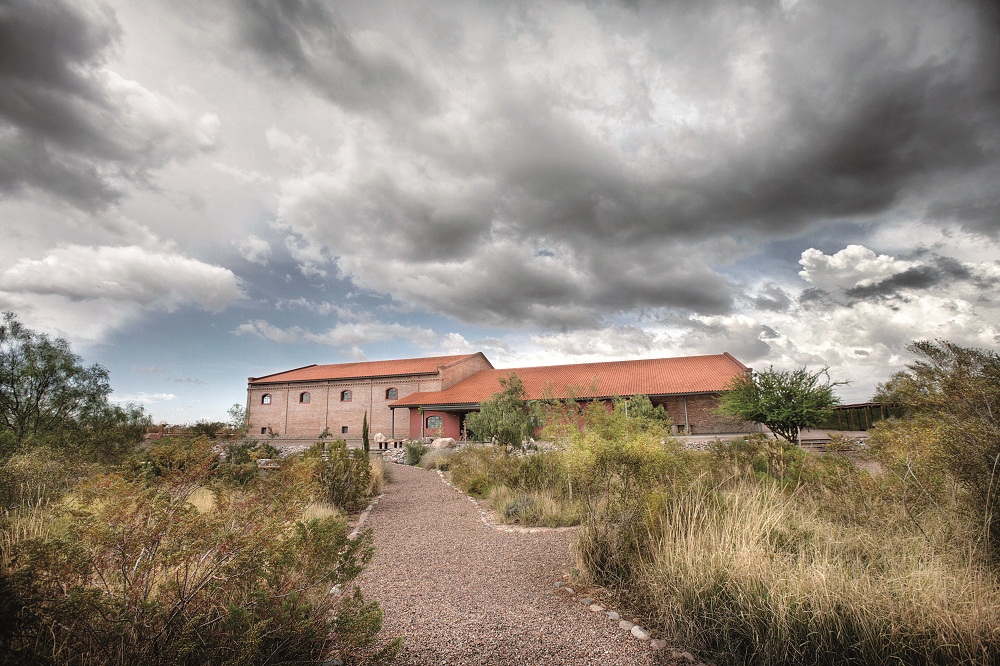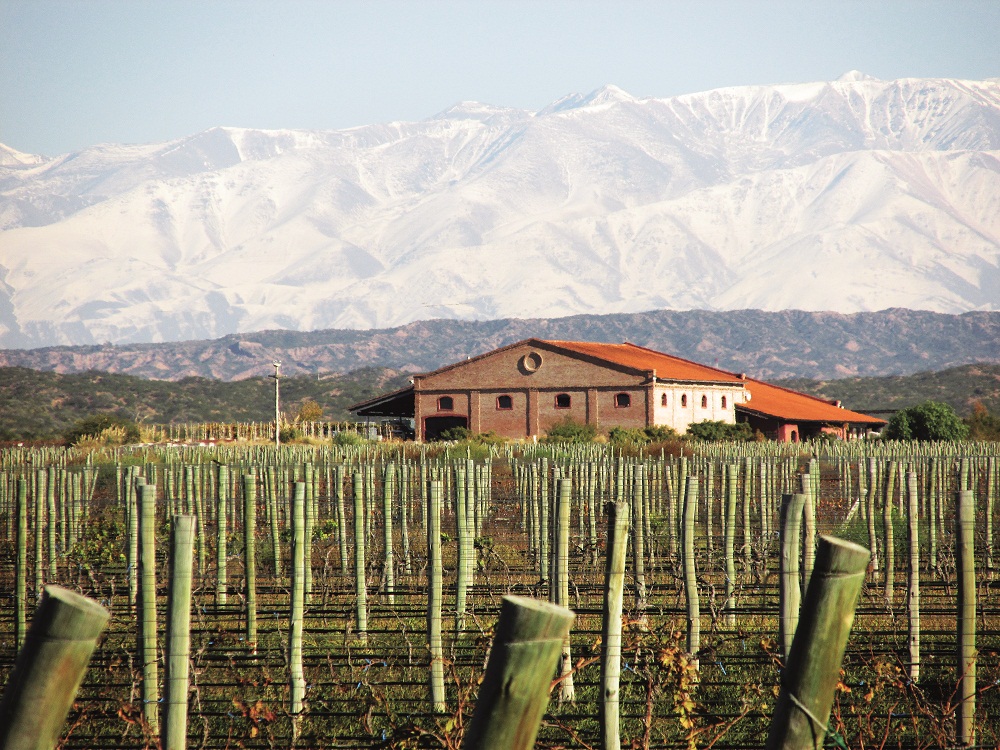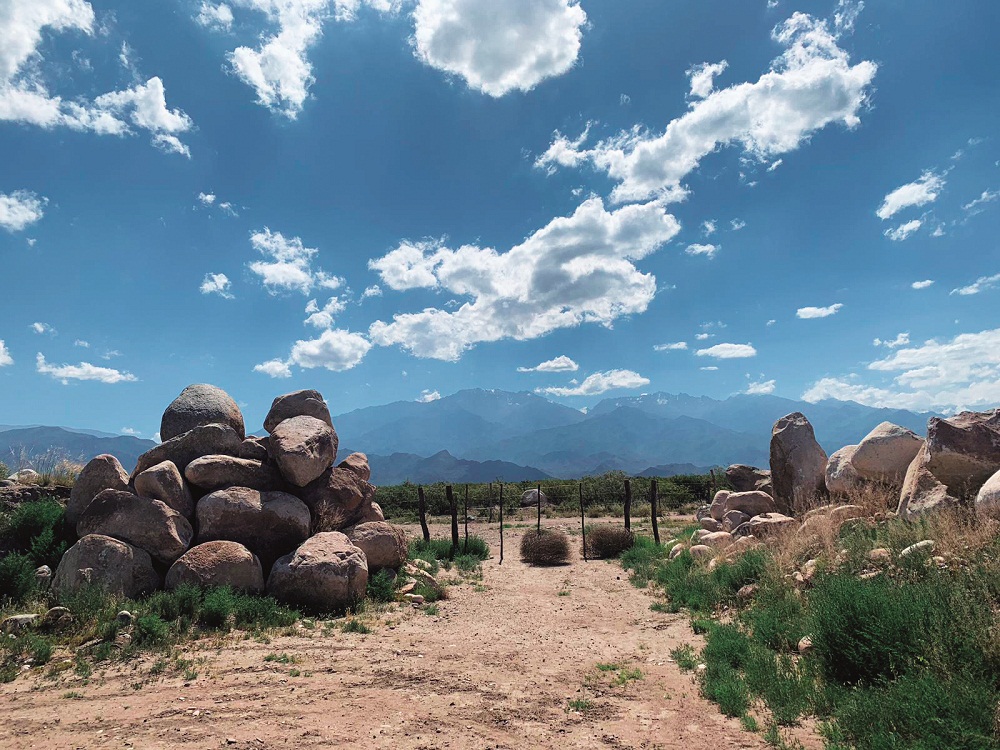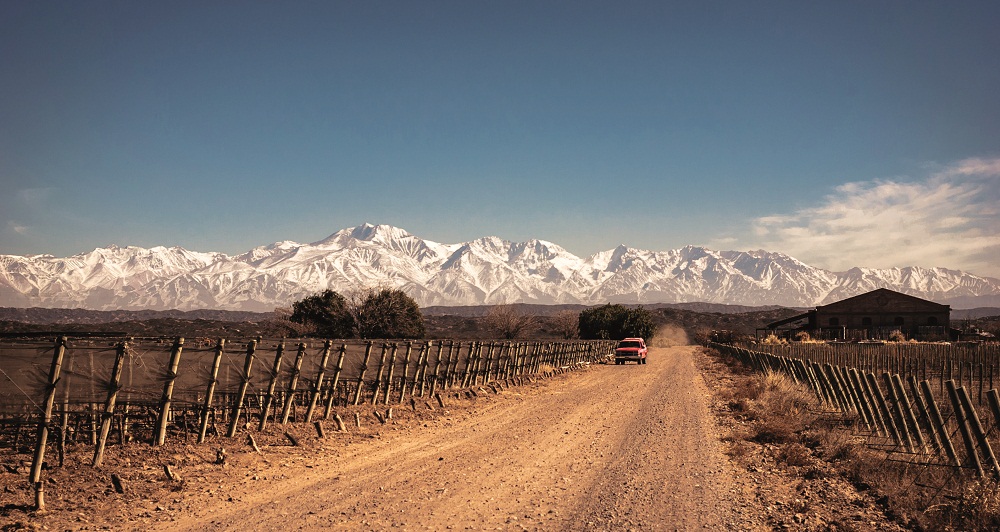Winemaker Leo Erazo is helping to define more than just Malbec at Altos Las Hormigas in Mendoza.

Emblems of wineries often include majestic animals such as eagles, lions, horses and dragons. But Altos Las Hormigas will make you look twice, for its label and name celebrates the humble, tiny ant. A saying in Argentina, “un trabajo de hormigas” or a job for ants, describes the work ethic and team-player dedication needed to achieve great tasks.
When Italians Alberto Antonini and Antonio Morescalchi first purchased 206 hectares of land in Lujan de Cuyo for the wine estate they were planning in 1995, their workers discovered a problem while planting the vineyards. Large colonies of local ants would feed on the tender sprouts of the newly planted vines, demolishing months of labour in as little as a single night. The ants seemed to cover enormous ground despite their size, and were deemed the ‘original’ owners of the land by the staff who refused to employ poison to remove them. Natural ways were used to deflect the ants, and the estate earned its name after the hormiga, now a symbol of good luck.
.jpg)
TRIAL BY SOIL
I meet the indefatigable hormiga, Leonardo (Leo) Erazo in Singapore, where he’s presenting his wines at a dinner at the Argentinian ambassador’s residence. Erazo was born in Santiago, Chile, in a family that had no ties to wine. His grandfather had a vineyard in Curico who sold grapes and didn’t produce wine, and it took Erazo a trip to Mexico where he first tasted a St. Emilion bottle before falling in love with the drink. Erazo spent the next decade shoring up his education and experience all over the world, receiving his diploma in agrarian studies in 2003 in Chile, then working stints in Spain, Australia, New Zealand, California and South Africa, where he researched the influence of soil over wine while completing a Masters of Science and Viticulture at the University of Stellenbosch.
In 2012, he returned to South America but on the other side of the Andes; Erazo joined Altos Las Hormigas as the winery was transitioning to a terroir-driven project. By this time, Altos Las Homigas was already firmly established as one of the earliest wineries to specialise in Malbec, a bold move in the 1990s when international grapes were more lucrative. In fact, winemaker Attilio Pagli was tasked to make an Italian-style Sangiovese when he first arrived in Mendoza, but quickly discovered that Mendoza had no intention of being Tuscany.

Finca Altos Las Hormihas is located 800m above sea level, with 40 hectares planted to Malbec and 5.6 hectares to Bonarda, the second most-planted red variety in Argentina. The terroir project, Jardin Altamira, is a new vineyard acquired in 2011 and planted in 2017, the result of their pursuit of “Mendoza gold” – limestone. Another ‘ant’ in the team, Pedro Parra, who holds a PhD in terroir from France, dug over 1,500 soil pits in the Uco Valley to uncover deep calcerous rock which imparts a graceful minerality and ageworthy quality to Malbec. The result is seen in the Appellation series from Gaultallary (1,300m above sea level) and Paraje Altamira (1,200m above sea level), both farmed organically and using only wild yeasts in the winery.
PROJECT BY PROJECT
Turning 43, Erazo muses that vineyards planted now will only see its peak in 20 years – but there are no shortcuts to make wine. For instance, the first year that Altos Las Hormigas worked with natural yeast, there was too much volatility resulting in a lot of vinegar, he chuckles ruefully. “When you go back to nature, using no synthetic products and doing ‘less’, you actually need to have more knowledge and patience,” he explains. Another decision was to drop new oak and small barriques and opt for used, large oak foudres that seemed to bring out more expressions from the Appellation wines. “Using the same barrels and same toast in a way homogenised the wine, getting the same taste of oak across many Malbecs,” Erazo points out. By avoiding over-ripened grapes and over-extraction in the winery, more of the terroir expressions are now clearer.

Aside from Malbec, Altos Las Hormigas makes a pioneering single varietal Bonarda under a sister label, Colonia Las Liebres (which means “colony of hares”). This Bonarda is a revelation – unoaked, juicy and full of expressive raspberry. Says Erazo of both Malbec and Bonarda, “It used to be that the more oaky, the better.”
In the past few years, Erazo has also been going back to the homeland of Malbec – to Cahors, where it is known as Cot. The project there is known as Causse, with three partners namely Causse du Theron, Causse des Ons and Causse du Vidot, where they achieve limestone expressions with a particular style – hand harvesting, full destemming of grapes, and ageing in concrete tanks without oak. The wines have been a recalibration of what the French think about the deep, dark style of Cot/Cahors, and come across perhaps more Burgundy in style.

On top of this, Erazo established a partnership with expat Justin Decker to make Rogue Vine (Chile) since 2011, working with old vines and different varietals in Itata Valley such as Cinsault, Riesling, and Pais. He is also in charge of the Chardonnay and Pinot Noir production from Gualtallary, under his own Revolver brand, where he explores Burgundian grapes on the same limestone terroir that produces Altos Las Hormigas’ Malbec. If it sounds like a lot of work, yes it is, and it takes a lot of passionate hormigas like Erazo to bring a new generation of South American wines to the world.
